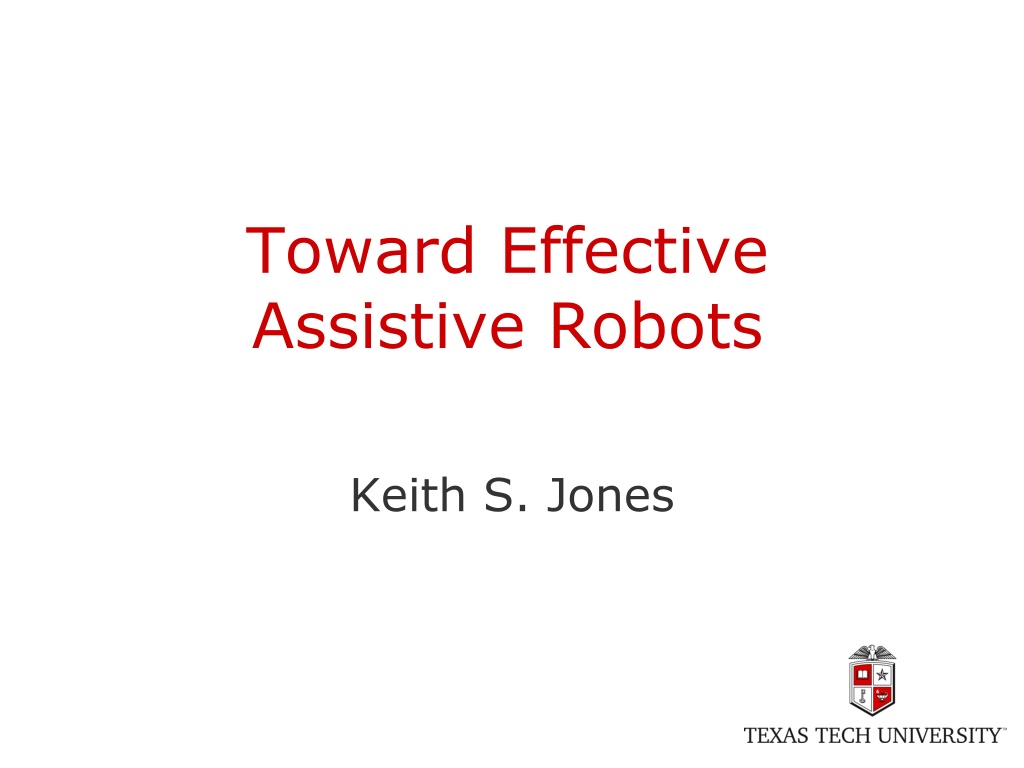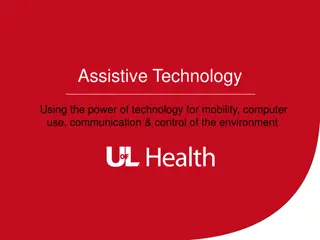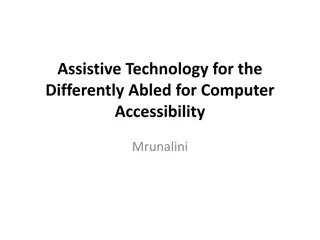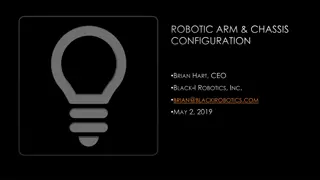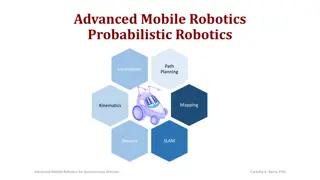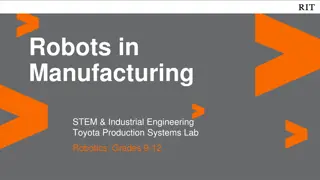Towards Effective Assistive Robots: Enhancing Elder Care with Robotics
The advancement of assistive robots is seen as a solution to the challenges faced by elder care facilities, aiming to help elders live independently in their homes. The need for assistive robots arises from space and staffing shortages in care facilities, pushing the emphasis towards in-home care solutions. The interaction quality between humans and robots plays a crucial role in the widespread adoption of assistive robots, necessitating research and development in human-robot interactions. Psychologists can contribute by serving as subject matter experts and researchers in the field, striving to impact the future of human-robot interactions through their knowledge and analysis.
Download Presentation

Please find below an Image/Link to download the presentation.
The content on the website is provided AS IS for your information and personal use only. It may not be sold, licensed, or shared on other websites without obtaining consent from the author. Download presentation by click this link. If you encounter any issues during the download, it is possible that the publisher has removed the file from their server.
E N D
Presentation Transcript
Toward Effective Assistive Robots Keith S. Jones
Robots Are Coming Pundits expect to find a robot in every home in the future Gates (2007); Norman (2004) Personal service robots will assist people with various household chores, or serve as caregivers for the elderly or disabled Thurn (2004)
Assistive Robots Are Needed Resident care facilities have space and staffing shortages Forlizzi, et al (2004) Thus, greater emphasis has been placed on helping elders live independently in their homes Forlizzi, et al (2004)
Assistive Robots Are Needed Keeping elders in their homes solves the space shortage, but not the staffing shortage Assistive robots could solve the staffing shortage Safety could also be impacted because most accidents occur while elders are home alone Living at Home (2002)
Why Do I Care? People must interact with assistive robots Widespread adoption of assistive robots will depend on the quality of human-robot interactions Just as widespread adoption of computers depended on the quality of human-computer interactions Shneiderman (1998)
How Can I Help? Psychologists can play two roles Subject Matter Expert Conveying what is known about Psychology that is relevant to Human-Robot Interaction Researcher Studying interaction with today s robots Generating new knowledge about Psychology with the goal of impacting interaction with tomorrow s robots
What Am I Doing? 1. Analyzing caregiving in elders homes 2. Enabling caregiver robots that understand a user s intentions and action-capabilities 3. Researching whether users understand caregiver robots action-capabilities
1: Analyzing Caregiving This research project seeks to explore and describe how caregiver robots should function by analyzing caregiving in elders' homes, creating a detailed account of current elder care practices, and translating this account into design recommendations for caregiver robots
1: Analyzing Caregiving Jones, Cherry, Harris, & Sridharan (2017) Reviewed documentation; Observed caregivers; Interviewing caregivers Created an Abstraction Hierarchy, which describes relations between the caregiving system s objectives, work tasks, and physical resources Confirmed existing research and revealed aspects of caregiving that have not been previously detailed
2: Understanding Users This research project seeks to enable robots to understand a) what actions their users intend to perform in the near-future b) whether their users are capable of safely performing those actions
2a: Understanding Intent It may be possible to program assistive robots to detect patterns of exploratory behavior in order to know what action an elder wants to do
2a: Understanding Intent Jones & Widlus (2017) Investigated whether exploratory arm movements contribute to reach-ability judgments Restricting arm movements degraded the accuracy of reach-ability judgments Next step Investigate synchronization between head and shoulder movements when the person intends to reach
2b: Understanding Affordances We know that observer s base their judgments about an actor s capabilities on the movements of the other person s body Ramenzoni, et al (2008) Stoffregen, et al (1999) However, we don t know which specific movements are critical
2b: Understanding Affordances Jones & Sridharan (2018) Will investigate to what do people attend when judging whether another person can jump to reach an object Point Light Display
3: Understanding Robots This research project investigates whether users understand their robots action- capabilities
3: Understanding Robots Jones, Schmidlin, & Wheeler (2012) Investigated whether users could accurately judge the stair-climbing abilities of autonomous, self-balancing, Segway-type robots Wheeler (2017) Replicated and extended JSW (2012) with a passively-stable robot
